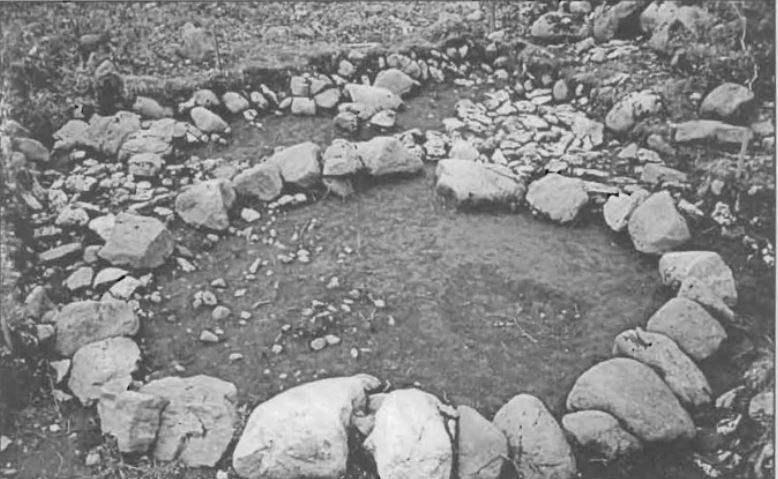
The best-known and most researched Viking Age grave site in Saaremaa, Piila is located in the middle of the island, in the former Kaarma parish. Archaeological works in Piila were conducted in two stages: the first excavations were carried out in 1987 (Vello Lõugas), and continued ten years later, from 1997 to 1998 (Mägi et al. 1998). Characteristic of other Viking age and late Iron Age grave sites of Saaremaa, various types of stone graves were discovered in Piila, a phenomenon likewise common in the areas neighbouring Saaremaa, for example in Western Estonia, Finland, Middle Sweden, and Gotland.
Among the seven graves uncovered during the excavations in 1997 and 1998, three different types of stone graves were identified. In 1998, two trenches were opened. One of these was directly adjoined to the southern end of the 1997 trench, while the other was dug 7 m north of the northern border of the 1997 trench. The positioning was based on the presumable location of graves. The trenches were made large enough to cover a whole grave with its immediate surroundings. However, one more grave was opened, which necessitated extending the southern trench. Both trenches combined eventually covered 77 m².

At least three stone circle graves composed of large granite stones and filled with smaller granite stones 15–20 cm in diameter, and surrounded by a pavement of cracked limestone slabs were discovered in Piila. Cremated burials were found under the filler stones, on the ground level in the middle of the grave. Additionally, another oval-shaped stone circle grave with a 4–4.2 m diameter was excavated, revealing a 75 cm wide gap on its western side, possibly an entrance. Adjacent to the entrance, potsherds of a Viking Age carinate fine ceramic with a specific decoration were unearthed, while most of the findings (melted bronze items, pieces of artefacts) and cremated pieces of bone (mostly dog bones) were located in the middle of the stone circle grave. Also two knives were found thrust into the layer of filler stones. The ceramics and a belt distributor found among other artefacts deposited in the central area allowed the grave to be dated to the 10–11th centuries.
Right next to this site was a similar grave 3.8 m in diameter. Part of its wall was broken, probably as a result of the construction of the grave described above. A pair of scissors was found under the surrounding limestone pavement, however, most of the artefacts were deposited in the middle of the grave. The melted pieces of a chain arrangement, chain holder, and a possible fragment of bronze bracelet suggest a female grave dating from the 10th or the beginning of the 11th century. Another grave, 3 m in diameter and with a partly crushed wall, contained a male burial dating from the 11th or early 12th century. The middle part of the grave revealed a charcoal-rich area one metre wide with plentiful cremated artefacts, like the point of a spearhead, fragments of bones, pieces of ceramics, a cross-shaped pendant, and fragments of a penannular brooch. The grave was dated based on the pendant and the brooch.




